12 Interesting Anteater Facts for Kids
Anteaters are unusual-looking creatures. Their long heads and snouts resemble tubes, and they lack any teeth. They utilize their powerful front legs and massive claws to smash into ant and termite nests and consume insects with their long, sticky tongues as they rush out.
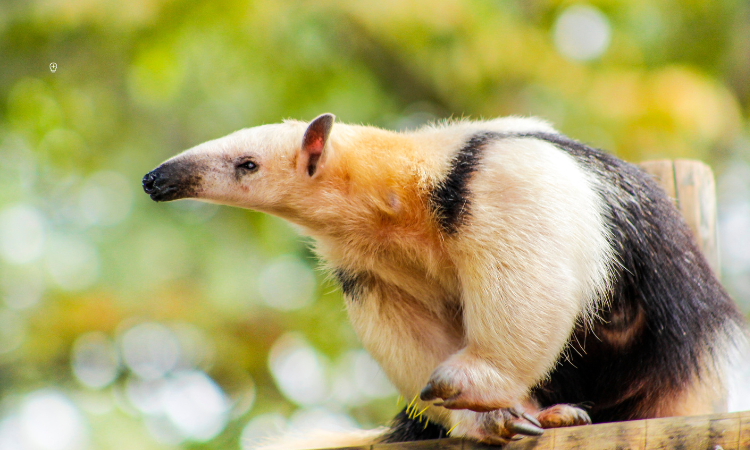
In this article, you will find some interesting and exciting facts about anteaters for kids.
Here are some of the basic facts about the anteater:
Common Name: Giant anteater
Kingdom: Animalia
Phylum: Chordata
Class: Mammalia
Order: Xenarthra
Family: Myrmecophagidae
Genus Species: Myrmecophaga (to eat ants) tridactyla (three toe/finger)
Here are some of the interesting facts about the anteater:
1. Their body temperature is the lowest of any mammal.
The anteater has the lowest body temperature of any terrestrial animal, and The temperature remains between 90 and 95 degrees Fahrenheit (33 and 36 degrees Celsius). This is most likely owing to the fact that their major dietary staple, despite the huge quantities consumed, has little to no nutritional or calorie value.
2. Female Anteaters Give Birth While Standing
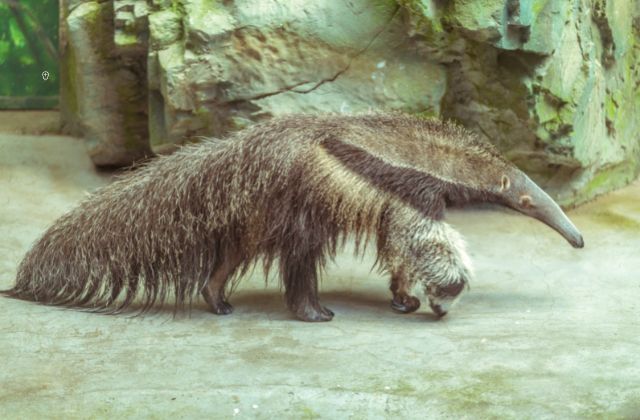
Anteaters are usually solitary creatures; however, they congregate during mating. Males then depart the family, while females stay and wander with their kids for roughly two years. Females deliver in an upright position, utilizing their tails for support when it’s time to give birth. They only have one kid at a time, and the infants are known as pups. Puppies ride on their mothers’ backs until they are strong enough to walk independently. Anteaters leave their moms after they are fully developed and capable of surviving in the wild.
3. Anteaters are quick runners.
Most of the time, an anteater will not move faster than a sluggish shuffle. Even those who spend most of their time amid tree branches are rarely seen doing anything other than reclining or crawling at a snail’s pace. They can sprint pretty rapidly, up to 30 mph, if afraid or disturbed. When cornered and unable to flee, anteaters stand on their rear legs and battle with their front claws. They can also swim and climb trees; however, this is not as frequent. In general, they only want to bathe in or cool down in shallow and muddy water.
4. An Anteater’s sense of smell is 40 times greater than ours.
The sense of smell of a giant anteater is 40 times stronger than humans. The lesser anteater, also known as a tamandua, has a powerful sense of smell and a 16-inch-long tongue, which is ideal for reaching into tight areas for food, such as an anthill.
5. Anteaters may sleep for extended periods of time.
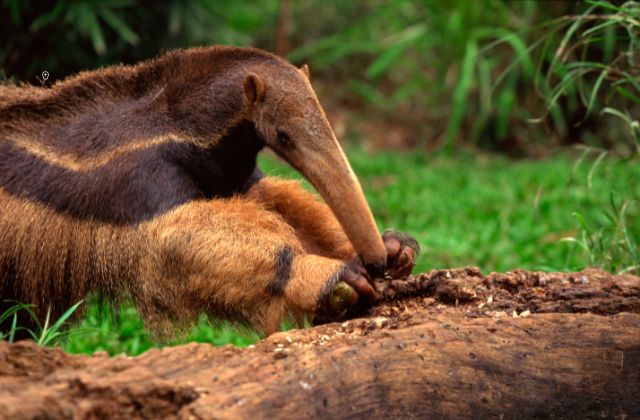
Their bodies adjust by saving energy whenever feasible. Anteaters move slowly, sleep for much of the day, and utilize their hair and tails to keep warm. It’s unusual to observe an anteater engaged in intense action for lengthy periods of time, such as climbing, jogging, or swimming. They may sleep for up to 15 hours at a time.
6. They have the largest tongues of any mammal, measuring two feet long.
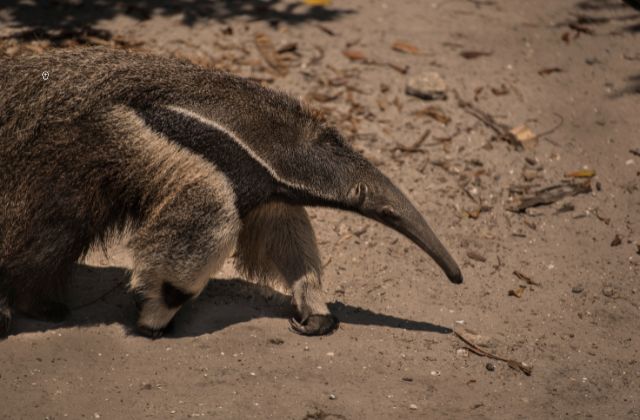
Anteaters acquire food with their tongues as their primary tool. These organs, which may reach two feet in length, are covered with tiny, spiky protrusions and sticky saliva. The anteater’s form and build allow it to move its tongue into the tight holes where ants and termites burrow. Anthills and termite mounds are no match for the anteater, which devours hundreds at a time with rapid-fire tongue flicks.
7. An anteater typically consumes ants and termites, eating up to 30,000 each day.
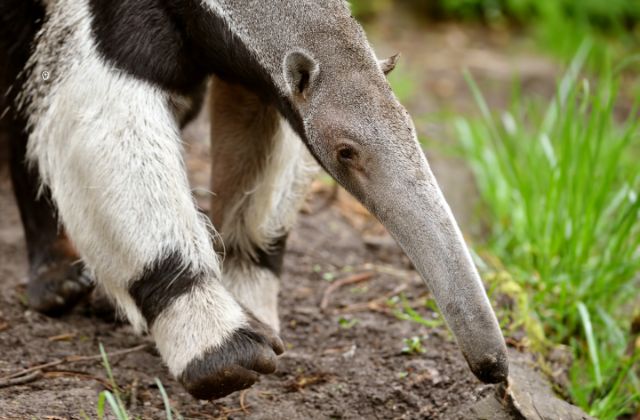
They may visit up to 200 ant and termite nests at a time in order to obtain the necessary amount of food for their bodies. An Anteater’s stomach generates formic acid rather than hydrochloric acid to aid digestion, and they have tough folds in their stomach that ground the ants and other insects with the help of grit and sand.
8. Anteaters have claws that resemble knives.
Even though they have four feet, only the front toes have claws. When anteaters move, they curl their feet into fistlike balls to preserve their claws and keep them from dulling. Anteaters utilize their razor-sharp claws for a variety of reasons, in addition to their brilliantly developed tongues. These claws are extremely lethal and serve as the animal’s primary protection against assaults.
9. The principal predators of anteaters are big cats like pumas and jaguars.
Anteaters defend themselves by standing on their hind legs and using their claws to cut and maim. Anteaters also use their claws to break into insect nests and get the food contained therein.
10. Anteaters are edentate creatures, meaning they lack teeth.
Their absence of teeth does not appear to be a barrier because their tongues and claws do all the scavenging. Their snouts also help the tongue by acting like a vacuum, capturing insects and pulling them in with a sucking action. Furthermore, because they feed ants and termites, they don’t need teeth because there is no tough flesh to chew or bite on.
11. They vary slightly based on the species.
There are four varieties of anteaters in the Vermilingua suborder. There are four of them: the giant anteater, the silky anteater, the northern tamandua, and the southern tamandua. They are similar in physical appearance and behavior, with some minor variances.
Because of its patterns and size, the giant anteater, which may weigh up to 90 pounds when fully mature, is also known as the “ant bear.” It is the biggest of the four anteater species, measuring eight feet from the tip of its nose to the end of its tail. The silky is significantly smaller and lighter in color than the pygmy. It is the smallest of the four and spends much of its time in trees.
Northern tamanduas, which inhabit Central America’s tropics, have distinct black markings on their shoulders and torsos and, like the silky, are mostly arboreal. Southern tamanduas may be found in Venezuela, Trinidad, and Uruguay, among other places. They have markings identical to their Northern counterparts and live alone in thickly wooded places.
12. Anteaters are threatened by humans
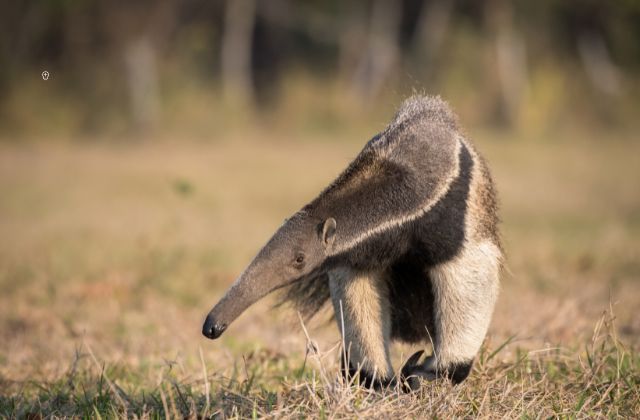
The most serious hazards to the giant anteater are habitat loss (due to urbanization), roadkill, poaching, fires, and feral dogs. Humans have been seen hunting Anteaters for sport or skin. Anteaters are occasionally killed or severely injured when sugarcane farms are burned before harvest. They are frequently hunted for food as well as for the illicit pet trade.
Conclusion
We hope that you liked the above fun facts about anteaters for kids. For more such interesting facts, visit our website!
